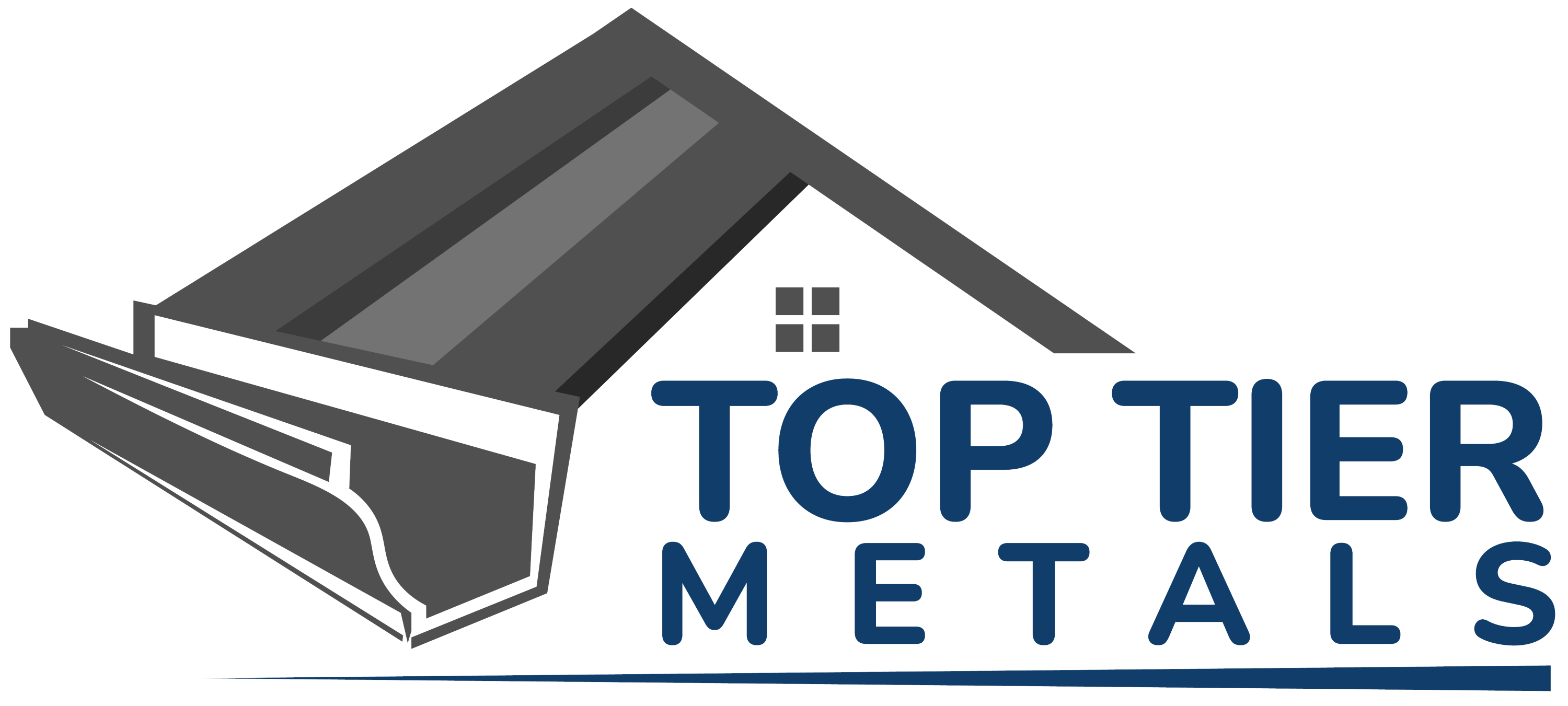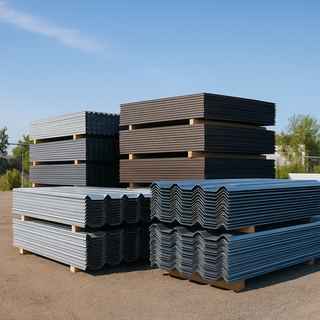From rusty barn sheets to sleek architectural statements, metal roofing has undergone a remarkable transformation over the past century. What began as a utilitarian solution for agricultural buildings has become one of the most desirable roofing materials for modern homeowners, DIY builders, and contractors alike.
In this extensive guide, Top Tier Metals explores the last 100 years of metal roofing — from humble beginnings to cutting-edge materials — revealing how innovation, engineering, and consumer demand have reshaped what a roof can be.
1920s–1940s: The Agricultural Origins
Metal roofing’s mainstream journey begins in rural America, where functionality and affordability reigned supreme.
Key Characteristics:
-
Corrugated galvanized steel was the dominant material.
-
Used almost exclusively on barns, silos, and industrial buildings.
-
Installed with hand-driven nails or early screws, often with little sealing.
-
Prized for durability and resistance to snow and rain.
Challenges included:
-
Minimal insulation or soundproofing
-
Lack of standardized sizing or finishes
-
Prone to rust without regular maintenance
This was a time when metal roofing was seen as purely functional — few considered it for residential use.
1950s–1960s: Wartime Innovation Spurs Growth
Post-WWII industrial advancements began to influence building materials, including roofing.
Notable Developments:
-
Introduction of zinc-aluminum coatings (the precursor to Galvalume)
-
Better galvanization techniques extended roof lifespans
-
Metal panels became available in more consistent gauges and lengths
-
Rise of quonset huts and military prefab housing brought metal roofing into more civilian applications
Still, asphalt shingles remained dominant for residential homes. Metal was still the "workhorse" of the commercial and agricultural world.
1970s–1980s: Standing Seam & Coatings Revolution
This era brought pivotal changes that laid the groundwork for today’s metal roofing boom.
Technological Shifts:
-
Emergence of standing seam systems: Sleek, vertical panels with concealed fasteners that drastically improved waterproofing and appearance.
-
Development of Kynar 500® PVDF paint systems: These high-performance coatings resisted UV fade, corrosion, and chalking.
-
Aluminum roofing gained traction in coastal regions due to its corrosion resistance.
Consumer Trends:
-
Architects began using metal roofing for modernist residential designs.
-
Metal roof suppliers expanded to cater to residential builders and upscale developments.
-
More color options and finishes made metal viable for visible roofs.
This was a turning point — metal roofs were no longer just about utility. They became a design element.
1990s–2000s: Residential Acceptance & DIY Surge
Metal roofing finally broke through into the mainstream residential market.
Key Advancements:
-
Better fastening systems: Self-sealing screws, gasketed washers, and advanced underlayments made installations more leak-proof.
-
Energy Star certifications for metal roofs with reflective coatings, which could reduce cooling costs by 20–25%.
-
Rise of "cool roof" initiatives in hot climates fueled metal roofing adoption.
DIY Movement:
-
Home improvement shows and online tutorials inspired DIYers to tackle roofing projects.
-
More suppliers began selling direct-to-homeowner, reducing material costs and making pro-grade roofing accessible.
Metal roofs began appearing on farmhouses, cabins, mid-century homes, and even colonial revivals. It was no longer "weird" — it was smart.
2010s–2020s: Architectural Innovation & Customization
As technology matured, so did the aesthetics and performance of metal roofing.
Trends That Shaped the Market:
-
Explosion of matte finishes, textured coatings, and faux-rust patinas for rustic or modern aesthetics.
-
Homeowners now choose from hundreds of colors, wood-look panels, and custom profiles.
-
Widespread adoption of Galvalume (zinc-aluminum alloy) and pre-painted steel for enhanced corrosion resistance and longevity.
-
Solar integration: Standing seam panels made solar mounting easier without drilling holes.
Top Tier Metals saw growing demand from homeowners who wanted both form and function — a roof that looked like it belonged in a magazine but could still handle Midwest winters or Gulf Coast storms.
Today (2025): Metal Roofing at Its Peak
Modern metal roofing is the result of a century of experimentation, refinement, and homeowner demand. Today’s panels are:
-
Strong: Typically 26–24 gauge steel or .032 aluminum
-
Sustainable: 100% recyclable and often made from recycled material
-
Customizable: Every finish, every profile, every color is now a design tool
-
Efficient: Energy-saving coatings, tight seams, and radiant barriers
-
Long-lasting: 40–70 years of life with minimal maintenance
-
DIY-Friendly: With the right guidance, homeowners can now install pro-grade systems themselves
Why Top Tier Metals Embraces This Evolution
We’ve built our business around helping homeowners and contractors get access to the best possible metal roofing at an affordable price.
Here’s how we stand apart:
-
Direct-to-customer pricing — no middleman markup
-
Premium materials only — no flimsy box-store panels
-
Hands-on support — real people ready to help you plan and install
-
Panel customization — choose your exact color, cut, and system
-
Fast shipping — delivered to your jobsite or driveway
Whether you’re restoring a barn or designing a minimalist masterpiece, we have the tools to help you build it better.
The Next 100 Years: What’s Ahead?
Looking forward, expect these trends to dominate the next evolution:
-
Integrated solar metal panels
-
Smart roofing sensors for moisture, wind, or hail alerts
-
AI-powered roof design tools to visualize and plan before purchase
-
Even higher energy performance standards
-
Local sourcing and prefab roofing kits
Top Tier Metals is already exploring these technologies to stay ahead of the curve — so our customers can keep building smarter.
Final Thoughts: From Rusty to Revolutionary
Metal roofing has come a long way — and it’s not done yet. What started as a rugged farm solution is now a flagship product for forward-thinking homeowners who care about design, durability, and environmental responsibility.
As you plan your next project, remember: you’re not just putting on a roof. You’re placing your home in a legacy of 100 years of innovation.
Build Your Legacy Roof Today
Let’s help you create something that stands the test of time — without compromising budget or style.
👉 Contact Our Team | 📞 Call Now






